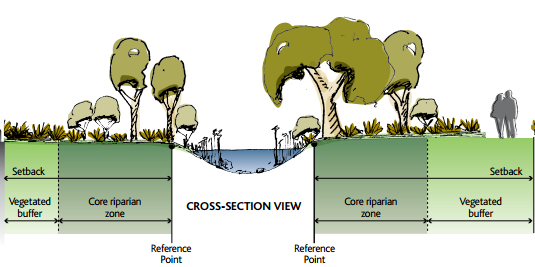Application: Canals, drainage, stormwater outfall
Description: A drainage corridor is a waterway and its surrounding area designed for multipurpose use within an urban context. Creating natural drainage corridors normally involves converting a ditch or storm drain into a natural creek flowing within a multipurpose corridor or, by rehabilitating and enhancing natural creeks and streams. They greatly reduce the number of drainpipes and other costly technologies required to manage stormwater runoff, and reduce flood management costs overall. Stormwater is collected in a traditional pit and pipe network within the road reserves. The pit and pipe network conveys flows to the drainage corridor, where wetland conditions treat runoff before discharging into the natural watercourse.
Contribution to climate resilience: Drainage corridors improve the management of stormwater runoff in urban areas, thus reducing the impacts of flooding. They improve water quality by treating the runoff before it is discharged into the natural watercourse. This approach helps to increase resilience to potentially damaging floods, which are expected to become more common as climate changes.
Supplementary sources of information:
http://www.wagga.nsw.gov.au/__data/assets/pdf_file/0018/4635/Lloyd_Study_Area2.pdf
https://www.dews.qld.gov.au/__data/assets/pdf_file/0008/78128/qudm2013-provisional.pdf
Background image credit: https://www.agric.wa.gov.au/soil-salinity/leveed-deep-drains-western-australia
This resilience-building measure is sourced from the Water Resource Adaptation Guide (2019) published by the National Council for Sustainable Development at the Ministry of Environment in Cambodia. The full Guide is available to download at URL https://ncsd.moe.gov.kh/sites/default/files/2019-10/Water%20Resources%20Adaptation%20Guide_March%202019_En.pdf


